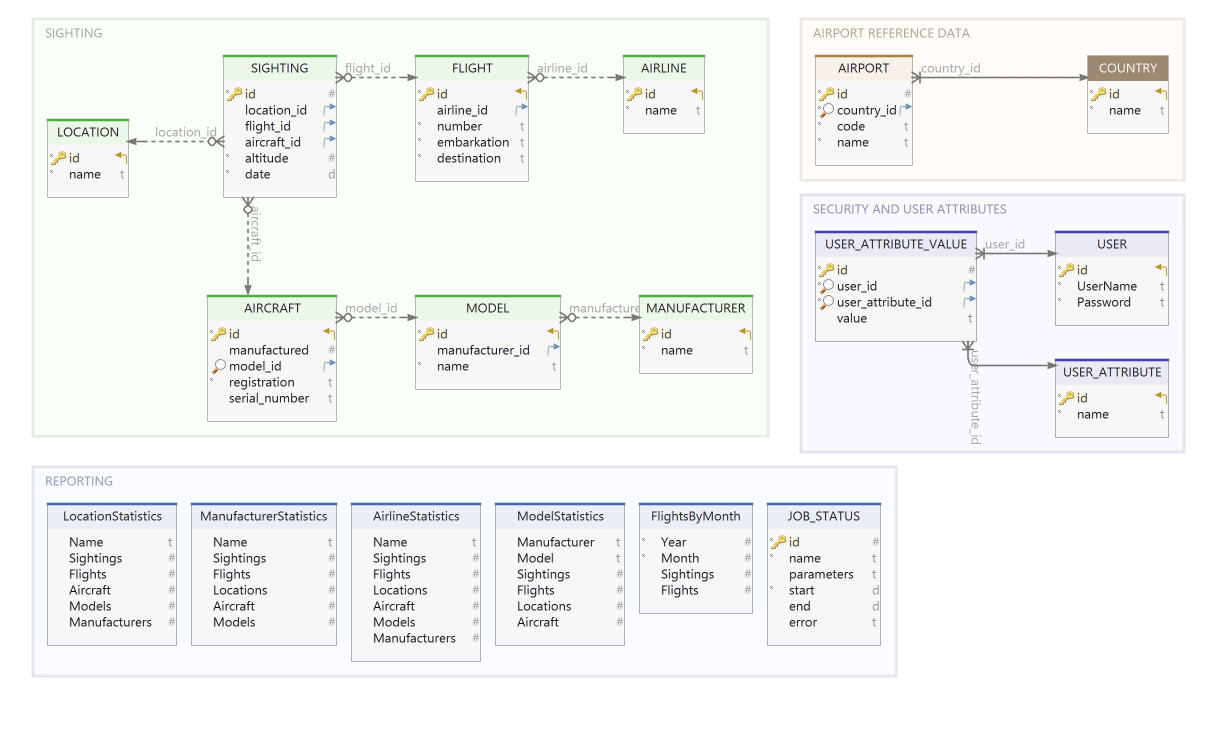-
Notifications
You must be signed in to change notification settings - Fork 0
Database

Conceptually, the schema is broken down into the following groups:
| Group | Contents |
|---|---|
| Sighting | Main data tables used for holding sighting details and related information |
| Airport Reference Data | Register of valid airport IATA codes, used for input validation |
| Ancillary | User authentication table, background job statuses and EF Core migration history |
| Keyless SQL Reports | Empty tables generated as an artifact of the SQL report configuration |
The "Sighting" group consists of the following sub-groups:
| Sub-Group | Contents |
|---|---|
| Aircraft Information | Aircraft details and associated models and manufacturers |
| Flight Information | Flight start and end points and operating airlines |
| Locations | Named locations where sightings are made |
| Sightings | Records of specific aircraft on specific flights at specific locations |
Each aircraft is associated with with a named model that, in turn, is associated with a named manufacturer. Multiple aircraft may be associated with a single model and multiple models may be associated with a single manufacturer:
| Table | Description |
|---|---|
| Manufacturer | Named manufacturer details |
| Model | Named models, each associated with a manufacturer |
| Aircraft | Aircraft registration details, each associated with a model |
Sightings are made at named locations. Multiple sightings may be associated with a single location:
| Table | Description |
|---|---|
| Location | Named location details |
Each flight has a number and route and is operated by a named airline:
| Table | Description |
|---|---|
| Flight | Flight numbers, points of embarkation and destination airports |
| Airline | Named airlines |
Each sighting is associated with a location, an aircraft and a flight and has additional details such as the aircraft altitude at the time of the sighting and the date:
| Table | Description |
|---|---|
| Sighting | The sighting records |
The registered users for the application are held in the User table. The contents of the table are used to authenticate users via the REST API.